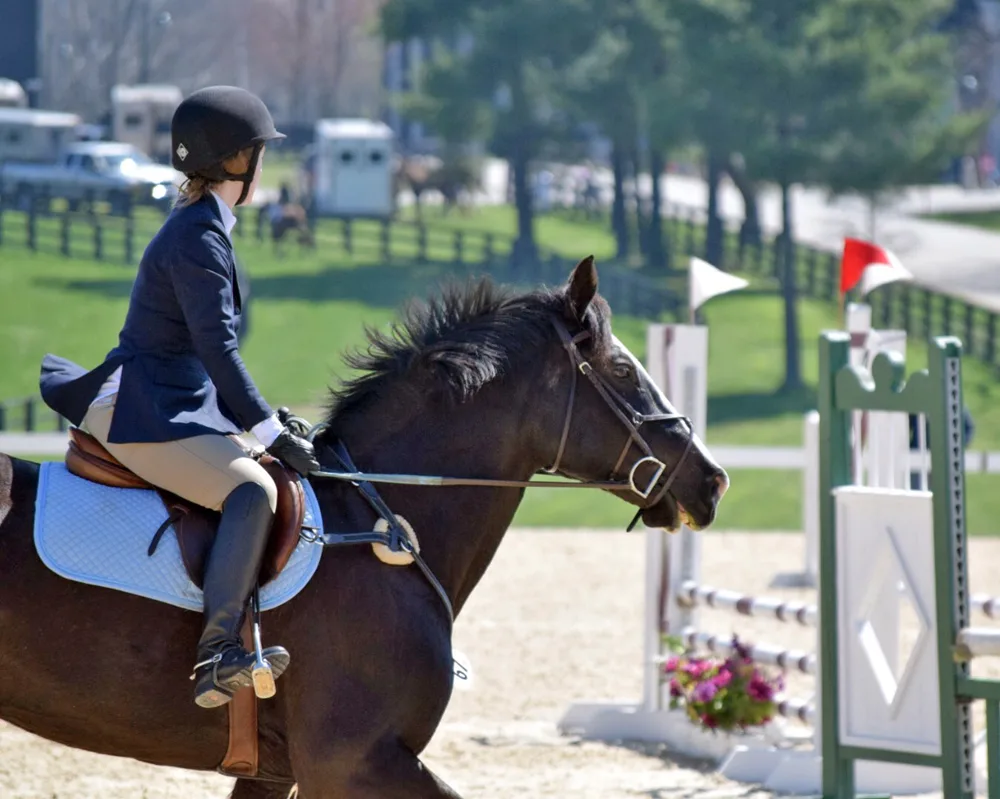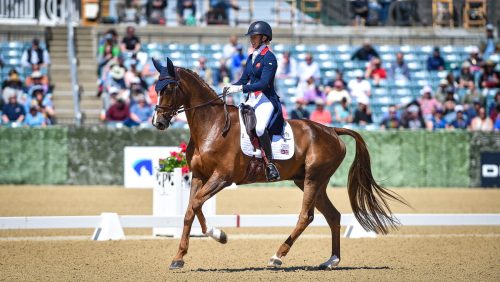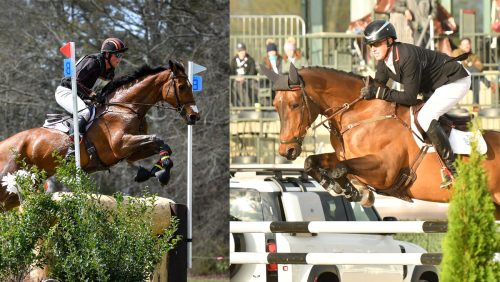I pulled out of the Kentucky Horse Park after our first combined test of the spring season with a nagging hole in the bottom of my stomach. A former jockey once told me that really analytical riders don’t necessarily make the best jockeys.
As with any athlete, someone who’s really successful in the starting gates must have the ability to make mistakes or even hit the ground at 35 miles per hour and get back on tomorrow without holding on to yesterday’s disappointments. I have never been good at this, and I had the feeling that the weekend’s rides were going to stick with me, the worst parts of them replaying in my head for weeks to come.
Neither our dressage test nor our stadium round was our worst; we had small moments where we fixed things that had challenged us in the past.
They weren’t our best either, given how well and how hard we’d been practicing at home in the weeks before. Dressage scores across our division were quite high, so I wasn’t surprised when we got slapped with a tough score.
“Oh well,” I told my trainer on the way to the stadium. “We got our leads and we did circles at C instead of ovals, so I’m going to count it as a good season opener.”
But of course, I wasn’t going to do that. Instead, I went home and watched video of a friend’s test. She had scored a 20, and I could see why. Her horse was supple, smooth, consistent in her capable, well-trained hands. I was pretty sure we wouldn’t ever look like that, but I knew we could have gotten closer if only I had added more leg here, more inside rein there.
ADVERTISEMENT
I don’t often miss the hunter ring, but at times like this I do wish I could enter a second class and get another run at a test or course that fell short. I can deal with putting in a lousy ride because of fear. I’ve dealt with some combination of stage fright and terror of jumping for a long time now.
After years of patient encouragement from my saint of a trainer, several bail-outs by my saint of a horse, and a lot of work on my part, I no longer enter the ring thinking, “I’m not sure I can do this.” I enter thinking, “I know I can ride this course, but I’m not sure I’ll get it right on the first try. And you only get one try. Also, is she counter-cantering again? Oh God.”
I had such visions of devouring the stadium course, of floating in dressage (at least for a few seconds). This, I’d silently hoped, might be the show that we “put it all together.” Photographic records of the event might finally show hints of the leg and hand positions I’ve been studying from Denny Emerson’s many writings on proper equitation.
I knew attaining these things wasn’t easy, but it was starting to seem like we’d never get there. And as an adult amateur who pours hours and dollars into becoming a better rider, I wasn’t sure how to deal with knowing I’d never get where I wanted to go. I wondered what Denny Emerson would tell me about knowing I might never get “there.”
Then I remembered—I’m a writer. I could call him and ask him. So I did.
“I guess it just depends on the meaning of the word ‘there,’” said Emerson. “’There’ for some Grand Prix dressage rider, or ‘there’ for Beezie Madden or Michael Jung, is a lot different than the ‘there’ of someone who’s trying to get their horse fit enough to do a 15-mile competitive trail ride. I think it’s about having a goal that’s realistic within your own physical realities—your physical condition, your age, the horse, your background.”
ADVERTISEMENT
It sounds so simple, but I’ve realized the key is to set reasonable goals, not just for your career as a rider, but for smaller things like a horse show or a lesson. Part of what constitutes a “reasonable” goal, Emerson told me, is what the horse will tolerate—you have to have a horse who won’t be so stressed by the learning process that they revolt. You also have to recognize whether you have a trainer who can explain things in a way that they will “click” and allow you to reach those goals. And, perhaps most importantly, don’t overdo it.
“Look, who’s going to be a McLain Ward or a Mark Todd?” Emerson asked. “We all have to settle somewhere. As long as we’re doing a pretty good job, that’s fine. You don’t have to overstress and over-intellectualize. Pretty good done most of the time is pretty darn good, you know?”
And so it is.
Our next combined test is in a few weeks and I think I’m going to make our goals a lot simpler: forward trot in dressage, and more forward jumps than sleepy ones. I think we can manage that.
You’ve gotten to know Jitterbug, the Chronicle’s Quadraped Correspondent, over her years of posting hilarious columns from a cantankerous draft-cross mare’s point of view. And now her “Human,” Natalie Voss, has joined our roster of bloggers to share her adventures as a hunter-rider-turned-eventer mounted on the ever-opinionated Jitterbug.















